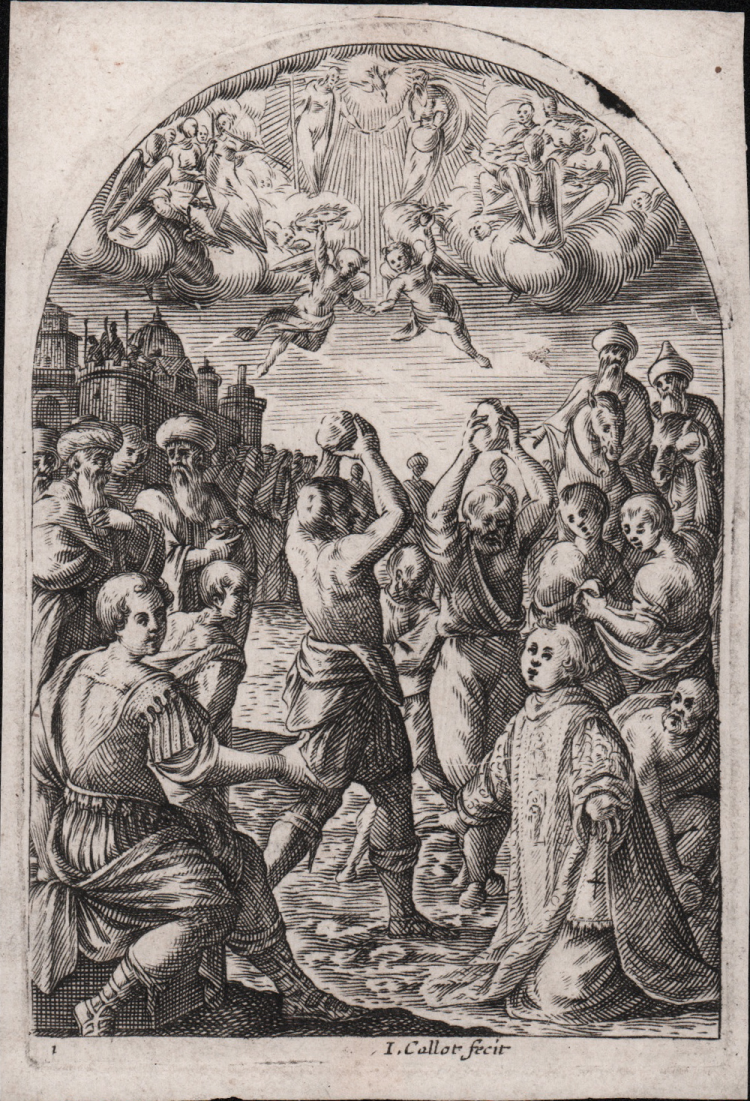




| Reference: | S47140 |
| Author | Jacques CALLOT |
| Year: | 1607 ca. |
| Measures: | 80 x 115 mm |



| Reference: | S47140 |
| Author | Jacques CALLOT |
| Year: | 1607 ca. |
| Measures: | 80 x 115 mm |
Martyrdom of St Stephen, with the saint kneeling on the right, surrounded by men throwing stones at him; the Holy Trinity appears above the scene.
Engraving, circa 1607/11, signed at the bottom “I. Callot fecit”.
After a destroyed painting of Lavinia Fontana. Example of the second state, with number 1 at bottom left.
From the set called “Delineationes picturae altarium in Ecclesiis S. Petri et S. Pauli Romae” [ Le Tableaux de Rome], a series of thirty prints representing altar paintings from S. Pietro and S. Paolo fuori le mura (Lieure 16 to 45). At first published without any inscription (production detail or number), the set was re-issued as two series; one numbered 1-16, the other numbered 1-13.
This plate is the last surviving echo of a painting executed by Lavinia Fontana for St Paul's outside the Walls in 1603 and destroyed by a fire in 1823.
A fine impression on contemporary laid paper, with margins, very good condition.
Bibliografia
Lieure 1927, Jacques Callot (33.II); Meaume 1860, Recherches sur la vie et les ouvrages de Jacques Callot (184.II); 'Jacques Callot' (Nancy 1992), n. 11.
Jacques CALLOT (Nancy 1592 - 1635)
|
He was a baroque graphics artist, draftsman and printmaker from the Duchy of Lorraine (an independant state on the North-Eastern border with France). He made etchings that chronicled the people and the life of his period (soldiers, clowns, drunkards, wanderers, beggars, and various outcasts). These images of people are often contrasted by spectacular landscapes (see, for instance, "The Temptation of St. Anthony"). His skill in shading and his use of different tones were remarkable for the period and he is often compared to Albrecht Dürer.
|
Jacques CALLOT (Nancy 1592 - 1635)
|
He was a baroque graphics artist, draftsman and printmaker from the Duchy of Lorraine (an independant state on the North-Eastern border with France). He made etchings that chronicled the people and the life of his period (soldiers, clowns, drunkards, wanderers, beggars, and various outcasts). These images of people are often contrasted by spectacular landscapes (see, for instance, "The Temptation of St. Anthony"). His skill in shading and his use of different tones were remarkable for the period and he is often compared to Albrecht Dürer.
|